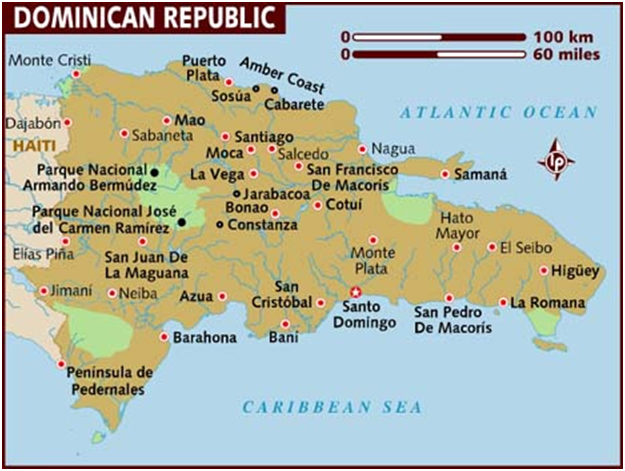Formal
name: Commonwealth of Dominica
Capital: Santo Domingo
Head of government: Prime Minister Roosevelt SKERRIT
Languages: English, French patois
Surface area: 48,442 km2
Currency: Dominican peso
(DOP, or RD$)
Population : 73,286 (2013 est.)
Labour force: 25,000 (2000 est.)
GDP: US$1.035 billion (2012 est.)
GDP per capital: US$14,600 (2012 est.)
GDP Growth Rate: 0.4% (2012 est.)
Inflation: 2% (2012 est.)
Value of exports:
US$41 million (2012 est.)
Main export commodities: bananas, soap, bay oil, vegetables, grapefruit, oranges
Export partners: Japan, Antigua and Barbuda
Exports of percentage of GDP:
5.30%
Largest companies: TRICOM
SA, Codetel,
Top schools: The Catholic
University Madre y Maestra, Pedro Henrquez
Urea National University and Eugenio Mara
de Hostos University
Literacy rate: 94%
Human development index:
0.702
Energy consumption (Quadrillion Btu):0.289
Energy production (Quadrillion Btu):0.014
Energy sources: gold and silver, amber,
Larimer, ferronickel, bauxite, coal, tin,
marble, salt, gypsum, limestone and gold.
(Source: CIA, The World Factbook) |










